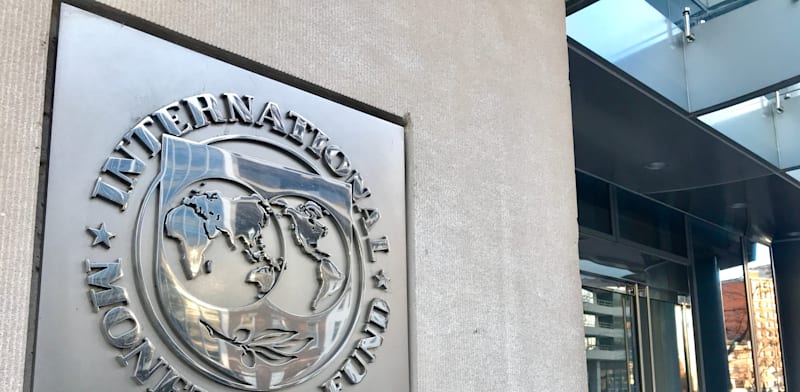When the housing market crashed within the early 2000s, new mortgage guidelines emerged to forestall the same disaster sooner or later.
The Dodd-Frank Act gave us each the Skill-to-Repay Rule and the Certified Mortgage Rule (ATR/QM Rule).
ATR requires collectors “to make an affordable, good religion willpower of a shopper’s potential to repay a residential mortgage mortgage in line with its phrases.”
Whereas the QM rule affords lenders “sure protections from legal responsibility” in the event that they originate loans that meet that definition.
If lenders make loans that don’t embody dangerous options like interest-only, unfavourable amortization, or balloon funds, they obtain sure protections if the loans occur to go unhealthy.
This led to most mortgages complying with the QM rule, and so-called non-QM loans with these outlawed options turning into rather more fringe.
One other widespread characteristic within the early 2000s mortgage market that wasn’t outlawed, however grew to become extra restricted, was the prepayment penalty.
Given prepayment threat at this time, maybe it may very well be reintroduced responsibly as an choice to avoid wasting owners cash.
A Lot of Mortgages Used to Have Prepayment Penalties
Within the early 2000s, it was quite common to see a prepayment penalty hooked up to a house mortgage.
Because the identify suggests, owners have been penalized in the event that they paid off their loans forward of schedule.
Within the case of a tough prepay, they couldn’t refinance the mortgage and even promote the property throughout a sure timeframe, usually three years.
Within the case of a smooth prepay, they couldn’t refinance, however may brazenly promote every time they wished with out penalty.
This protected lenders from an early payoff, and ostensibly allowed them to supply a barely decrease mortgage charge to the patron.
In any case, there have been some assurances that the borrower would possible maintain the mortgage for a minimal time frame to keep away from paying the penalty.
Talking of, the penalty was typically fairly steep, corresponding to 80% of six months curiosity.
For instance, a $400,000 mortgage quantity with a 4.5% charge would lead to about $9,000 in curiosity in six months, so 80% of that will be $7,200.
To keep away from this steep penalty, owners would possible dangle on to the loans till they have been permitted to refinance/promote with out incurring the cost.
The issue was prepays have been typically hooked up to adjustable-rate mortgages, some that adjusted as quickly as six months after origination.
So that you’d have a state of affairs the place a house owner’s mortgage charge reset a lot greater they usually have been primarily caught within the mortgage.
Lengthy story brief, lenders abused the prepayment penalty and made it a non-starter post-mortgage disaster.
New Guidelines for Prepayment Penalties
As we speak, it’s nonetheless potential for banks and mortgage lenders to connect prepayment penalties to mortgages, however there are strict guidelines in place.
As such, most lenders don’t hassle making use of them. First off, the loans should be Certified Mortgages (QMs). So no dangerous options are permitted.
As well as, the loans should even be fixed-rate mortgages (no ARMs allowed) they usually can’t be higher-priced loans (1.5 share factors or greater than the Common Prime Supply Charge).
The brand new guidelines additionally restrict prepays to the primary three years of the mortgage, and limits the payment to 2 p.c of the excellent steadiness pay as you go through the first two years.
Or one p.c of the excellent steadiness pay as you go through the third yr of the mortgage.
Lastly, the lender should additionally current the borrower with an alternate mortgage that doesn’t have a prepayment penalty to allow them to evaluate their choices.
In any case, if the distinction have been minimal, a shopper may not need that prepay hooked up to their mortgage to make sure most flexibility.
Merely put, this laundry listing of guidelines has principally made prepayment penalties a factor of the previous.
However now that mortgage charges have surged from their document lows, and will pull again an honest quantity, an argument may very well be made to carry them again, in a accountable method.
May a Prepayment Penalty Save Debtors Cash As we speak?
Currently, mortgage charge spreads have been a giant speaking level as a result of they’ve widened significantly.
Traditionally, they’ve hovered round 170 foundation factors above the 10-year bond yield. So for those who needed to trace mortgage charges, you’d add the present 10-year yield plus 1.70%.
For instance, at this time’s yield of round 4.20 added to 1.70% would equate to a 30-year fastened round 6%.
However due to latest volatility and uncertainty within the mortgage world, spreads are almost 100 foundation factors (bps) greater.
In different phrases, that 6% charge may be nearer to 7%, to account for issues like mortgages being paid off early.
Numerous that comes all the way down to prepayment threat, as seen within the chart above from Rick Palacios Jr., Director of Analysis at John Burns Consulting.
Lengthy story brief, a variety of owners (and lenders and MBS traders) count on charges to come back down, regardless of being comparatively excessive for the time being.
This implies the mortgages originated at this time received’t final lengthy and paying a premium for them doesn’t make sense in the event that they receives a commission off months later.
To alleviate this concern, lenders may reintroduce prepayment penalties and decrease their mortgage charges within the course of. Maybe that charge may very well be 6.5% as an alternative of seven%.
In the long run, a borrower would obtain a decrease rate of interest and that will additionally cut back the probability of early compensation.
Each due to the penalty imposed and since they’d have a decrease rate of interest, making a refinance much less possible except charges dropped even additional.
After all, they’d have to be applied responsibly, and maybe solely provided for the primary yr of the mortgage, possibly two, to keep away from turning into traps for owners once more.
However this may very well be one solution to give lenders and MBS traders some assurances and debtors a barely higher charge.
Earlier than creating this website, I labored as an account govt for a wholesale mortgage lender in Los Angeles. My hands-on expertise within the early 2000s impressed me to start writing about mortgages 18 years in the past to assist potential (and current) house patrons higher navigate the house mortgage course of. Comply with me on Twitter for decent takes.














